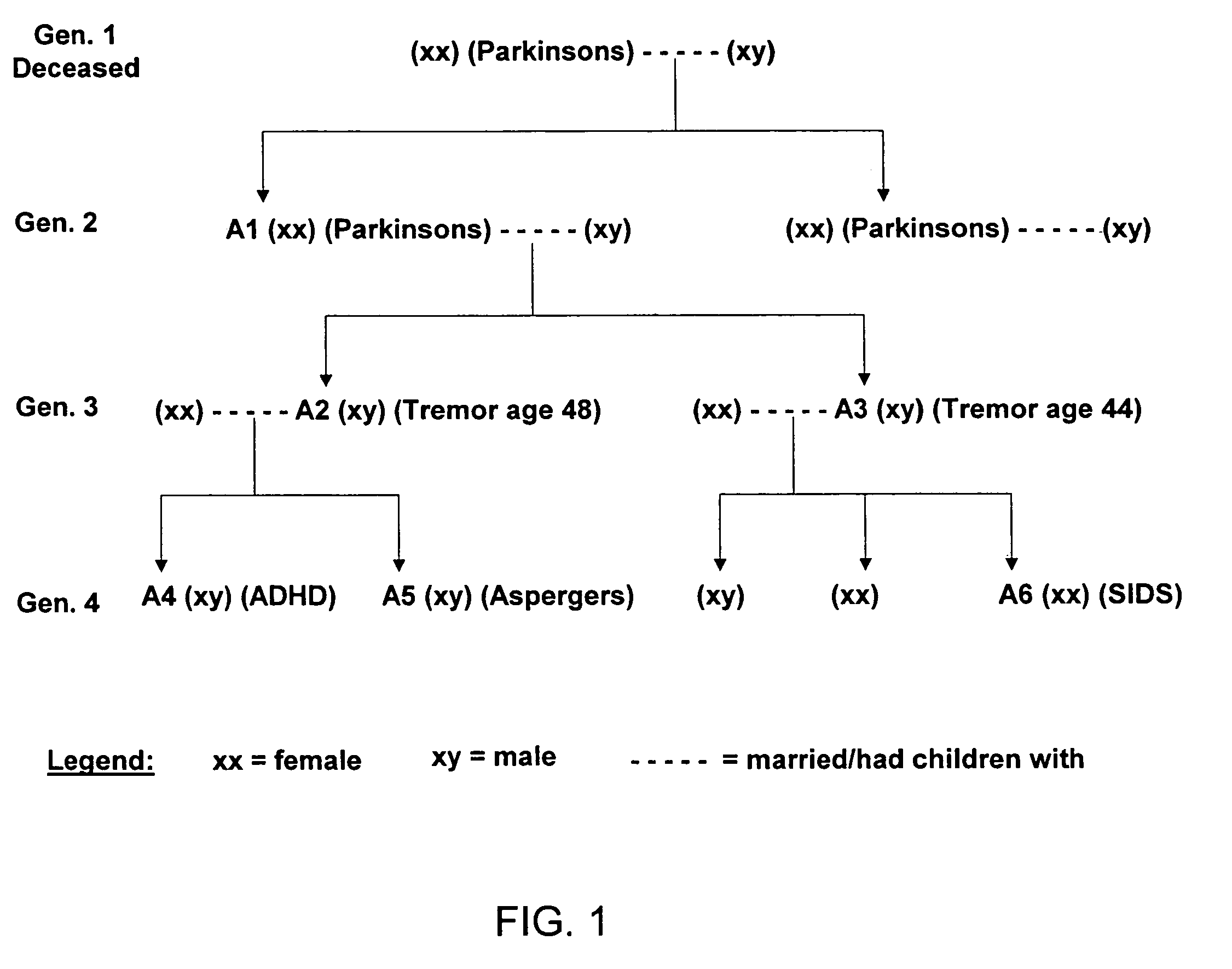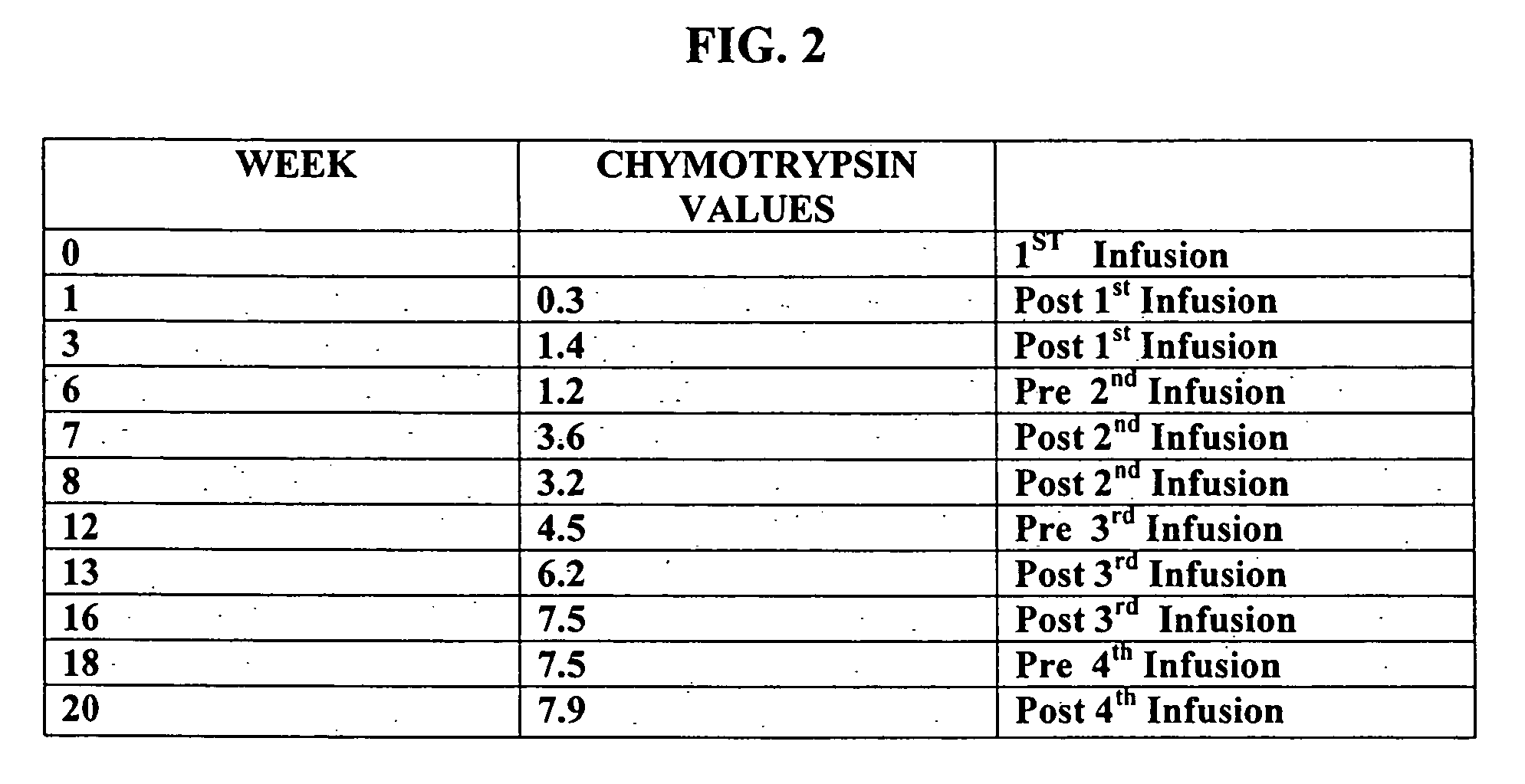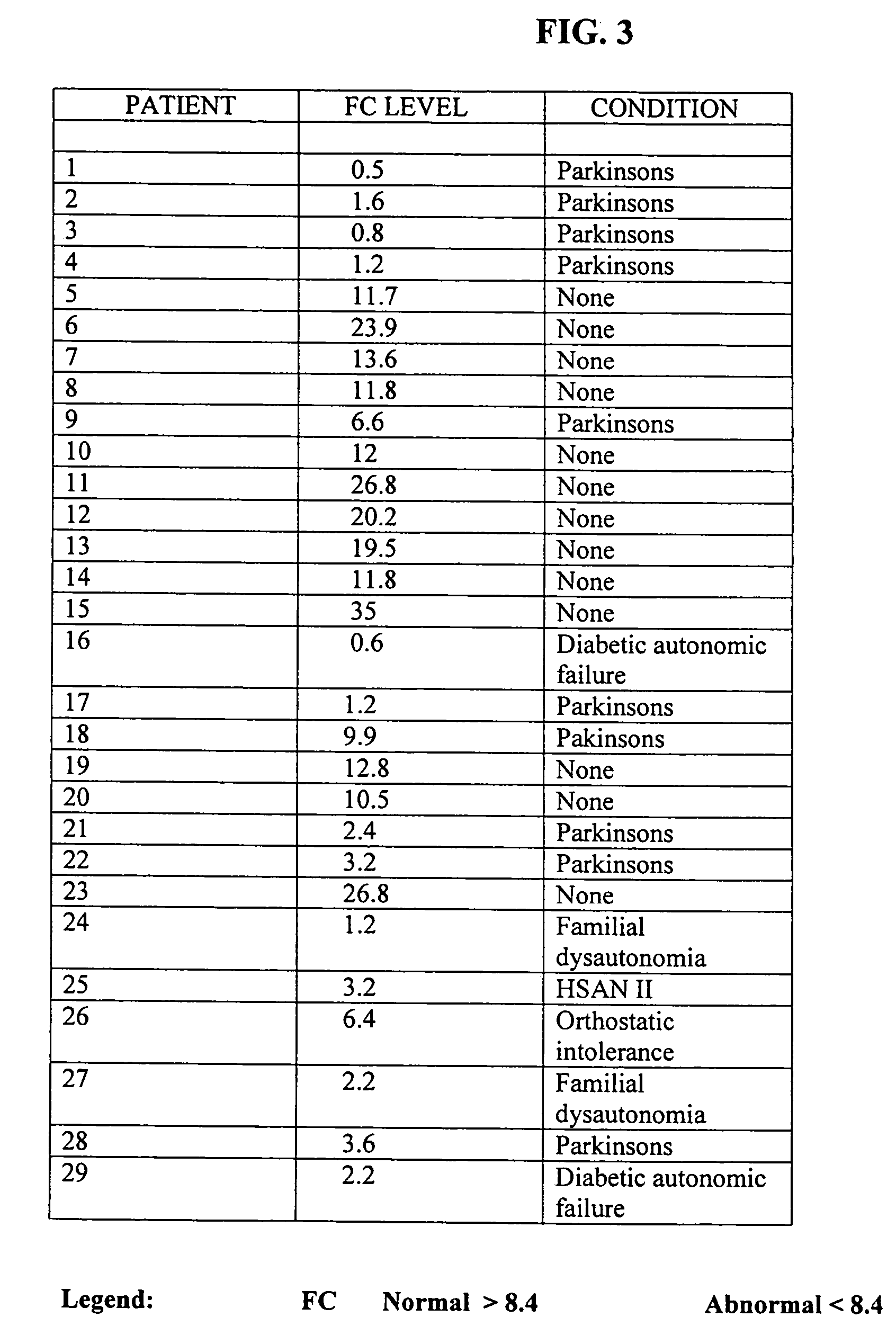Methods for diagnosing and treating dysautonomia and other dysautonomic conditions
a dysautonomic and autonomic disease technology, applied in the field of dysautonomic and other dysautonomic conditions, can solve the problems of severe sleep disturbance, constant nausea, and inability to find a substrate that would allow injectable forms in the medical science, and achieve the effect of improving the symptom of the disorder
- Summary
- Abstract
- Description
- Claims
- Application Information
AI Technical Summary
Benefits of technology
Problems solved by technology
Method used
Image
Examples
case 1
[0049
[0050]FIG. 1 is a diagram of a family tree over four generations of a family known for having Parkinson's, SIDS and ADD / ADHD and learning disabilities. As shown, each of the generations 1 through 4 demonstrate a related condition. In generation 1, one parent had Parkinson's disease. In generation 2, A1 has Parkinson's disease. In generation 3, A2 and A3 suffered from tremors for 2 and 1 years, respectively. In generation 4, A4 has ADHD and is learning disabled, A5 suffers from Aspergers (a form of PDD) and A6 suffered from SIDS. The family tree demonstrates a connection between dysautonomia, SIDS and ADD / ADHD. It is postulated that if Parkinson's, SIDS and FFI could result from a prolonged QT interval, and that these dysautonomic conditions could be linked together, the fecal chymotrypsin levels, for example, would be abnormal.
[0051]Certain members of the family in FIG. 1.(i.e., A1, A2, A4 and A5) were examined by analyzing their fecal chymotrypsin. In a preferred embodiment, a...
case 2
[0054
[0055]A 6 year old male child previously diagnosed with Familial Dysautonomia presents with marked autonomic dysfunction, including a total inability to walk or talk. The child lacked fine motor movements, and underwent an autonomic crisis 5–7 times per day, which necessitated continuous skilled nursing with life support equipment including a respirator in close proximity. The child was fed with a food pump, and had to have his bowel evacuated by hand due to the near total anesthesization of the small and large intestines. Fundal Plication was performed in order to deduce the incidence of influx, and excessive drooling was continually present. The child was completely dependent upon his care givers, and was classified during his first year of life as having autistic qualities.
[0056]The child was administered ongoing secretin infusions. A preferred secretin infusion process includes the initial step of prepping an and of the individual with an IV injection of saline. A test dose...
case 3
[0059
[0060]A child diagnosed as having FD was administered a fecal chymotrypsin test using the test described above on a stool sample obtained from the child comprising about 2 grams of stool. As shown in FIG. 2, the initial fecal chymotrypsin level of the child was determined to be 0.3 U / gram, which falls significantly below the preferred normal threshold of 8.4 U / gram. The child was administered a 1–2 U / kg of body weight infusions of Secretin-Ferring via an IV push method over a 20 week period and stool samples were analyzed either pre or post infusion. The results shown in FIG. 2 demonstrate that the child's fecal chymotrypsin level progressively increased with the secretin infusions.
PUM
| Property | Measurement | Unit |
|---|---|---|
| pressure | aaaaa | aaaaa |
| systolic pressure | aaaaa | aaaaa |
| angle | aaaaa | aaaaa |
Abstract
Description
Claims
Application Information
 Login to View More
Login to View More - R&D
- Intellectual Property
- Life Sciences
- Materials
- Tech Scout
- Unparalleled Data Quality
- Higher Quality Content
- 60% Fewer Hallucinations
Browse by: Latest US Patents, China's latest patents, Technical Efficacy Thesaurus, Application Domain, Technology Topic, Popular Technical Reports.
© 2025 PatSnap. All rights reserved.Legal|Privacy policy|Modern Slavery Act Transparency Statement|Sitemap|About US| Contact US: help@patsnap.com



